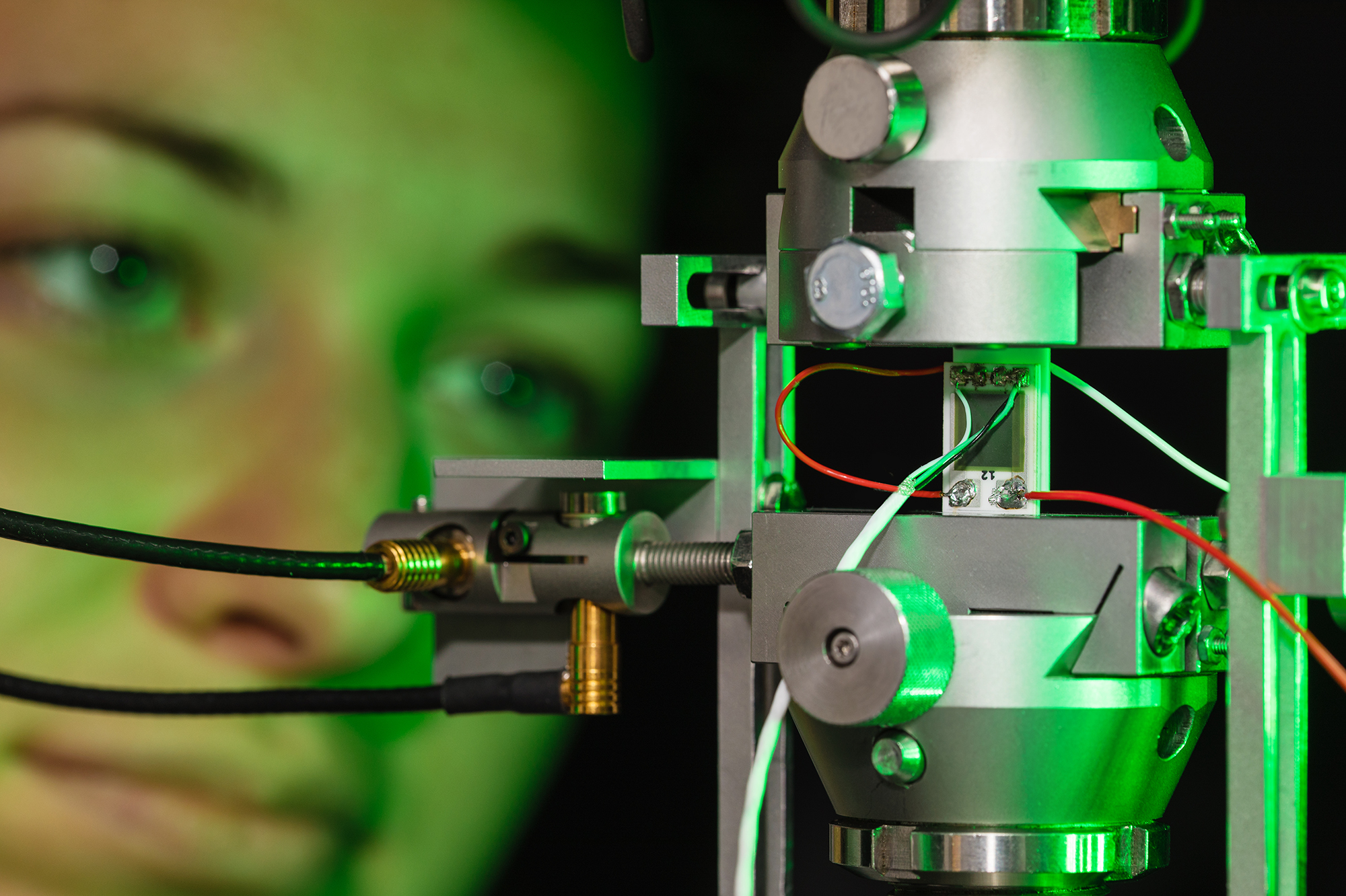The right connection – IKTS scientists close gap for virtual electronics design
Many devices whose availability and reliability are essential are now electronically controlled. It is simply inconceivable what the consequences would be of the failure of a respirator or a vehicle assistance system. In particular, the soldered joints between the microelectronic components are of special importance. Scientists at Fraunhofer IKTS develop material models based on real measurement data for a wide variety of solder alloys in a uniquely wide temperature range. This makes virtual electronics design more accurate, faster and cheaper.

As digitization progresses, the demands on the embedded microelectronics, i.e., on the electronic components and their electrical, thermal and mechanical connections to one another – the so-called solders – are also increasing. Whereas in the past, printed circuit boards tended to be manufactured as flat components, the trend today is toward 3D integration of electronics, which promises greater power density in the smallest possible space. The layout of the electronics, the design, is thus becoming increasingly complex. This concerns both the interaction of new types of materials and the multidimensionality of the wiring directions on the electronics assembly.
Virtual design ensures reliability
Before they are used, electronic assemblies are tested for reliability. Since real tests of all possible design variants would be too lengthy and expensive, electronic assemblies are configured virtually. This involves simulating how the electronics react to thermal and mechanical loads. Among these are impacts or acceleration, but also strains due to heating during use.
The basis for calculating the behavior under load is, on the one hand, the variation of the geometry to find the ideal setup and, on the other hand, the behavior of the chosen materials, which is described in a material model. Scientists at the Fraunhofer Institute for Ceramic Technologies and Systems IKTS have succeeded in determining material model parameters for solders of different alloys in a wide temperature range from -70 to 230 °C. This means, for example, that the measurement data required for automotive applications, typically in the range from -40 to 140 °C, can be generated without gaps, or applications for the cold range, e.g. in aviation or energy supply, can be tested at very low temperatures.
Optimized material models for solder creep
For a material model, measurement data from a real experiment are transferred to a digital twin. It is advantageous that the measurements at IKTS are carried out directly on the solder contact to be investigated and not on test specimens. Inverse material modeling is used to determine the material characteristics and provide the solder model.
In particular, the time-dependent plastic deformation – known as creep – can be predicted in this way. “Until now, it was only possible to describe secondary creep. This involves time-dependent deformations that occur in ductile solder materials with high deformations of greater than 1 %,” explains Dr. Mike Röllig, head of the Testing of Electronics and Optical Methods department at Fraunhofer IKTS. However, alloys that are currently being developed are very creep-resistant, i.e., the deformations under load change conditions are very low, so that their description with known models for secondary creep is not permissible. Mike Röllig's team is one of the few players worldwide to have succeeded in developing measurement technology for data generation and complex models that describe upstream primary creep.
New materials for electronics
The IKTS researchers have been working on this topic in close partnership with the Institute for Packaging and Interconnection Technology of Electronics (IAVT) at the Technische Universität Dresden since the switch from lead-based solders to more eco-friendly materials in the early 2000s. Currently, other interconnection materials, such as sintered silver contacts, are coming into focus.
But new materials are not only being used for connections: More generally, Polymers and other novel materials are increasingly used in electronics. This in turn requires the investigation of non-linear changes in material behavior and thus the development of ever new material models. “With the unique measurement technology available at Fraunhofer IKTS and our know-how in model development, we are meeting this challenge and enabling our customers to achieve precise virtual electronics design in the future. With this, and with the design support tools used at the institute for the simulation and optimization of assembly and connection designs, we make our contribution to reliable electronic assemblies,” Mike Röllig summarizes.